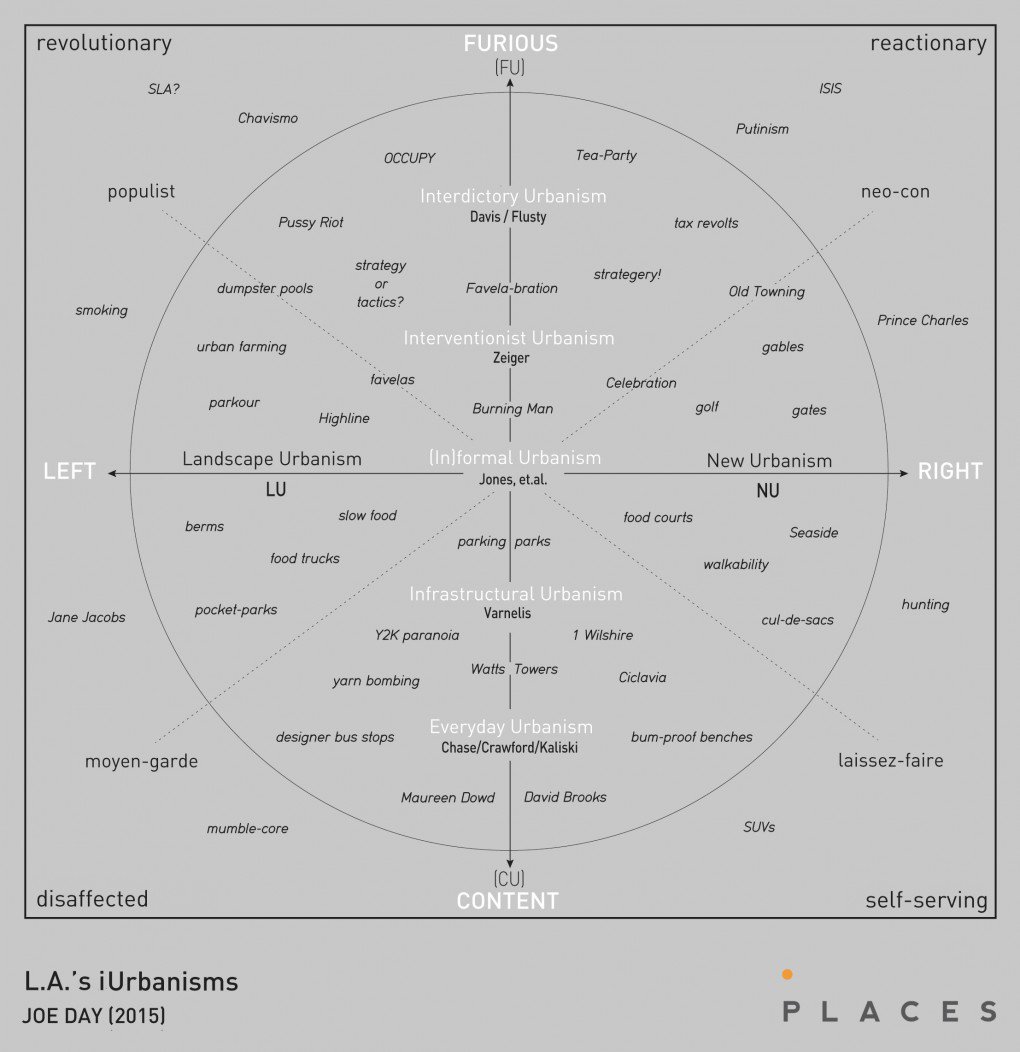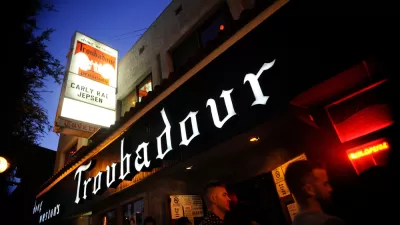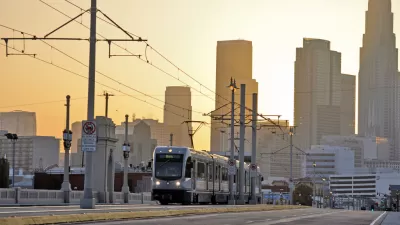Insightful designers continue to seek a better future for Los Angeles architecture by way of L.A. urbanism.
In Los Angeles, in the last decade of the old millennium, these were polarizing debates, especially for the swell of Baby Boomers trying to establish careers in practice and academia. Yet since then the vitriol has eased. Starting in the mid-'90s, as the public Internet began to organize the world, the focus on local "place" has been eclipsed by a fascination with global "space"; and leftish designers in Los Angeles—Boomers no less than Gen-Xer’s and Millennials—who've wanted to erect actual buildings have devised various ways to get past the impasse of the Double No. Today we can categorize these local workarounds under the useful rubrics of Everyday, Interdictory, Infrastructural, Interventionist, and now Informal Urbanism. (While beyond Los Angeles, a welter of more insurrectionist urbanism-without-urbanists has arisen: Burning Man, Occupy, and the Tea Party, to name a few; and taken to a city-altering extreme, one might even include the horrifically anti-cosmopolitan war crimes of ISIS.)
FULL STORY: The iUrbanism of Los Angeles by Joe Day

Manufactured Crisis: Losing the Nation’s Largest Source of Unsubsidized Affordable Housing
Manufactured housing communities have long been an affordable housing option for millions of people living in the U.S., but that affordability is disappearing rapidly. How did we get here?

Americans May Be Stuck — But Why?
Americans are moving a lot less than they once did, and that is a problem. While Yoni Applebaum, in his highly-publicized article Stuck, gets the reasons badly wrong, it's still important to ask: why are we moving so much less than before?

Research Shows More Roads = More Driving
A national study shows, once again, that increasing road supply induces additional vehicle travel, particularly over the long run.

Concrete to Community: A Schoolyard Makeover in West Philly
With guidance from the Trust for Public Land, third graders at Overbrook Elementary are leading the redesign of their asphalt schoolyard into a vibrant green space, learning valuable skills and creating lasting community impact in the process.

Which US Rail Agencies Are Buying Zero-Emissions Trains?
U.S. rail agencies are slowly making the shift to zero-emissions trains, which can travel longer distances without refueling and reduce air pollution.

San Diego School District Approves Affordable Housing Plan
The district plans to build workforce housing for 10 percent of its employees in the next decade and explore other ways to contribute to housing development.
Urban Design for Planners 1: Software Tools
This six-course series explores essential urban design concepts using open source software and equips planners with the tools they need to participate fully in the urban design process.
Planning for Universal Design
Learn the tools for implementing Universal Design in planning regulations.
City of Moreno Valley
Institute for Housing and Urban Development Studies (IHS)
City of Grandview
Harvard GSD Executive Education
NYU Wagner Graduate School of Public Service
City of Cambridge, Maryland
Newport County Development Council: Connect Greater Newport




























